The summer is still hot, but we’re already looking toward fall. Join us for a tour of our summer garden. Some of the plants in our garden have been harvested completely, some are finishing up and looking a little sad in the summer heat and unusually dry weather, but we still have some we’re very much looking forward to harvesting. Find out what we planted for the first time this year, what did well for us, what didn’t quite work as planned. In addition, what will be in our fall garden.

The main vegetable garden
The first stop on the summer garden tour is our main vegetable garden. At about 20’x70′, it is the largest planting area we have. We planted 3’x20′ rows with 2′ paths between. We tried to keep plant families and companions in the same rows or adjoining rows. Though this isn’t the most conducive for seed saving, it can make managing a large garden easier. Soon we will get to seed saving, but we might need to have fewer varieties of some vegetables.
Row 1
This was our first year growing celery. Even though it didn’t get very tall, it did well. The kale is a bit stressed from the dry summer, but it is a great cool weather crop and can even survive frost and snow with a little protection. This is our second year growing onions and this year we even harvested a few, though very small. The Swiss chard is still looking pretty good, the spinach was overwhelmed with rain and weeds before it had much chance to get well established and the lettuce, of course, bolted in the hot, dry summer. We will replant all of these cool-weather plants for fall except for celery and won’t plant bulbing onions, just the bunching variety.
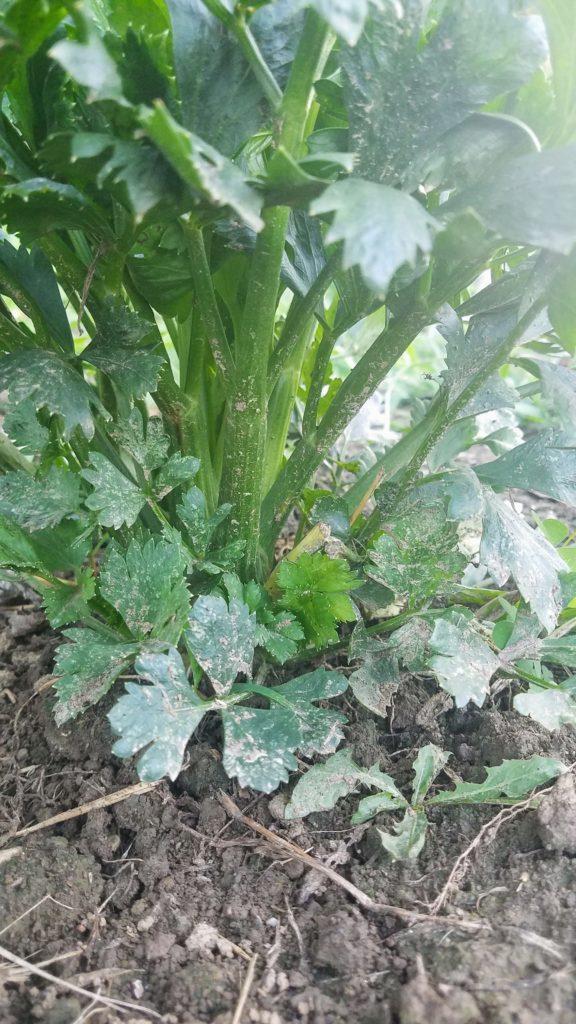
Row 2
We have a few varieties of carrots we planted this year — Cosmic Purple, Parisienne, Danvers half long, Little Finger, Amarillo, and Oxheart. Because we didn’t thin these as well as we should have, some were pretty small, though the Danvers and Oxheart looked pretty good! We finished off this row with s few tomato starts that didn’t fit in the tomato row. We will replant these carrots, in addition to a Kyoto Red variety that is best for fall.
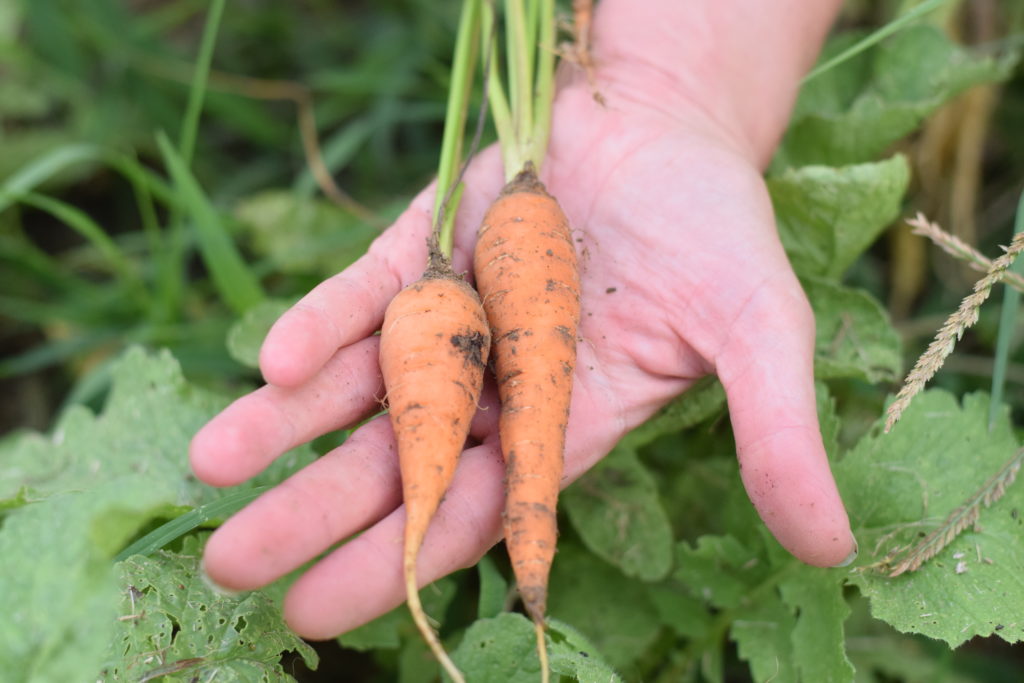
Row 3
We planted French Breakfast radishes and Easter Basket radishes, which is a seed blend of various colors. These are now looking a bit sad due to the heat but will do well once the temperatures cool. We planted 3 varieties of beets, a yellow Golden, the Chioggia with it’s bright pink and snow-white concentric stripes and my favorite, the Early Wonder red beet. Despite late thinning of the beet bed, we did manage a reasonable harvest. We will plant radishes and beets again for the fall.
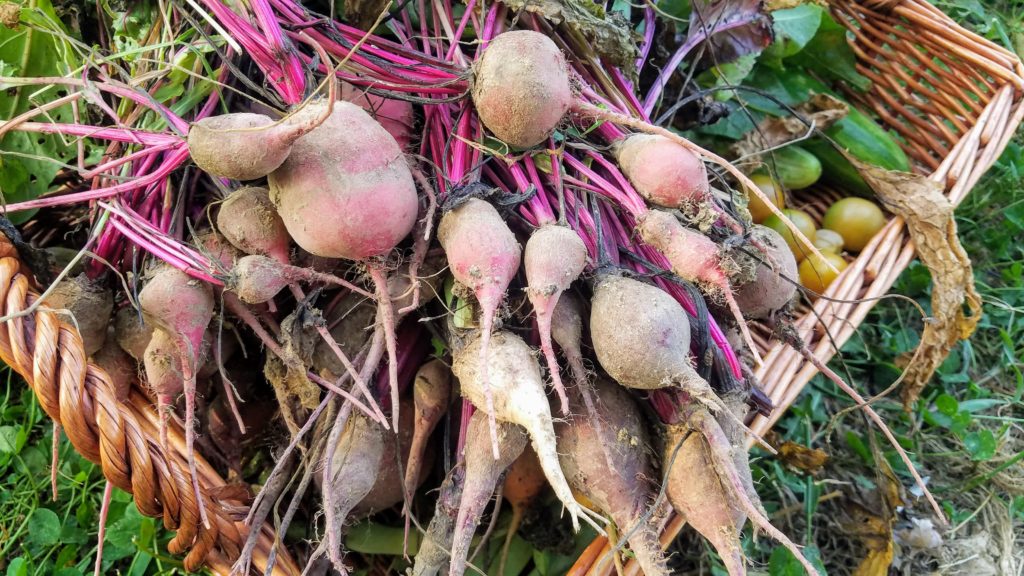
Row 4
Peas are pretty touchy when it comes to heat, so they aren’t usually found beyond spring in the summer garden. So I’m surprised that they were still making a few sweet pods for us. But, as you can see, the summer heat is taking its toll on the plants and they’re drying out. We planted a pea for dry storage, a snow pea and my husband’s favorite, a sugar snap. Net to the peas, we had turnips, though those have all been harvested. We will give all these guys another try in the fall garden.
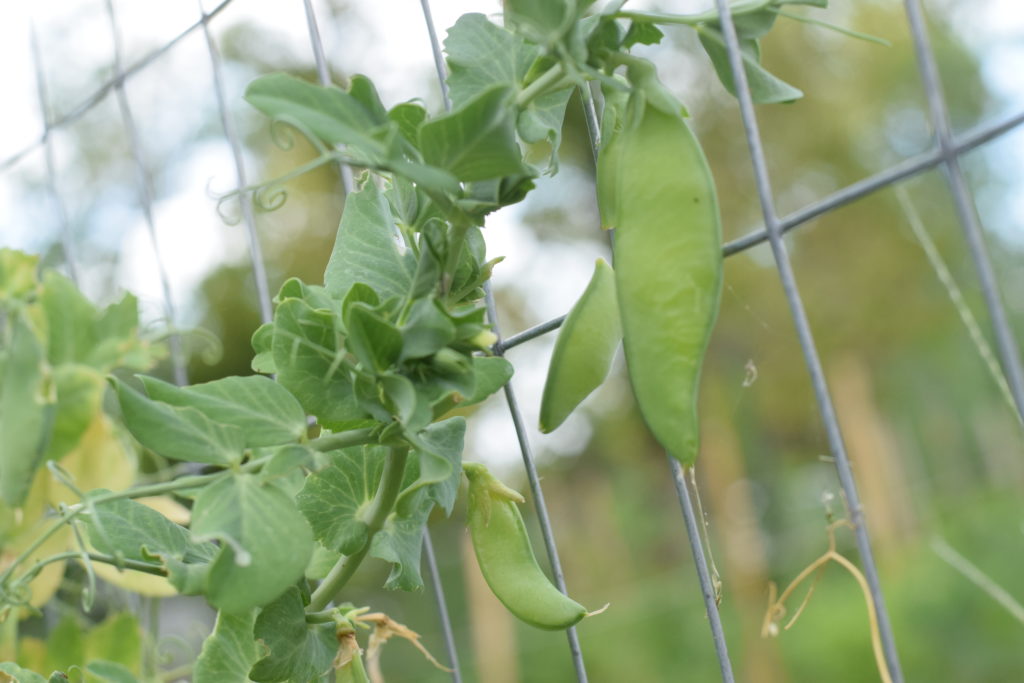
Row 5
Brassicas, the cabbage family. What can we say? Too much rain in spring, too many weeds, then too hot and dry in the summer. Ugh. But, we tried and will try again this fall. In fact, we already have some tiny guys started to move to the garden in a couple of weeks. We planted broccoli, cauliflower, Brussels sprouts, a red cabbage, a green cabbage, a green savoy cabbage, and a Chinese napa type cabbage. I KNOW someday we will have sauerkraut and slaw made from our own garden.
Row 6
When the pepper plants we started from seed started looking sad in their starter tray, my husband bought “a few” organic pepper starts. Cayenne, Jimmy Nardello, Round of Hungary, Corni di Toro, a sweet banana, and Sugar Rush Cream. Because they were started in a greenhouse, they had a great head start and have been doing pretty well making a lot of peppers. Only a few have ripened for picking so far, but we’re thankful and looking forward to the beautiful colors as they change from green. To the end of this row, we added a few tomato starts that didn’t fit in their row. The growing season for peppers is too long and their preference for the heat of the summer garden means they aren’t a viable option to plant in a fall garden in our zone.
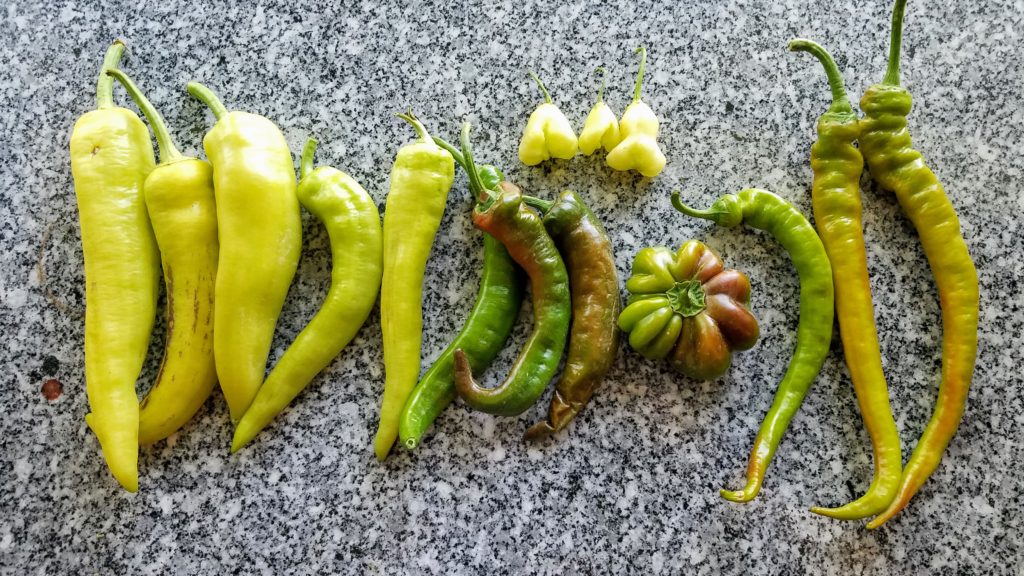
Row 7
We have several varieties of tomatoes, almost all doing well and making a lot of tomatoes. Red cherry, Principe Borghese, Amish paste, San Marzano, yellow gooseberry, Dr. Wyche’s, Cherokee Purple, German Pink. We are waiting on some color other than green for most of these varieties. Though the cherry tomatoes and Borghese are making a lot of beautiful red fruit, the others are just starting to add some pretty pinky purple and golden yellow beauty to their row. Like peppers, the long growing season and their love of summer heat make them a no go for the fall garden.
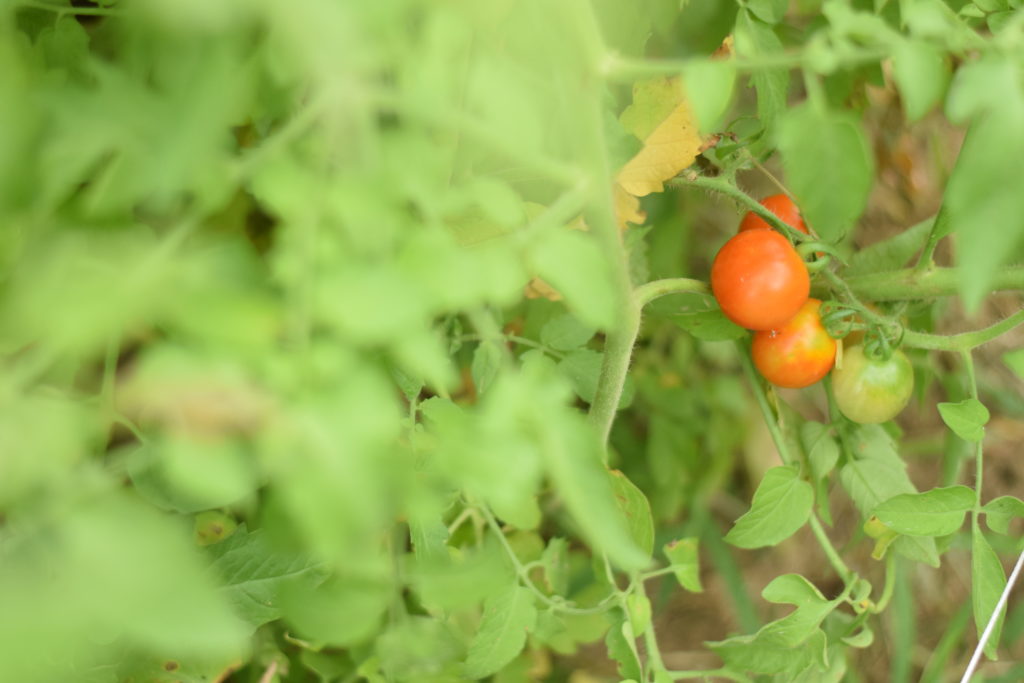
Halfway through our Summer Garden Tour – Row 8
These are the peppers we started from seed. Most of them bounced back from the scare they gave us, though they are behind in size compared to those we purchased. Cayenne, Jimmy Nardello, a Hungarian, sweet banana, sweet bell, and Sugar Rush Peach.
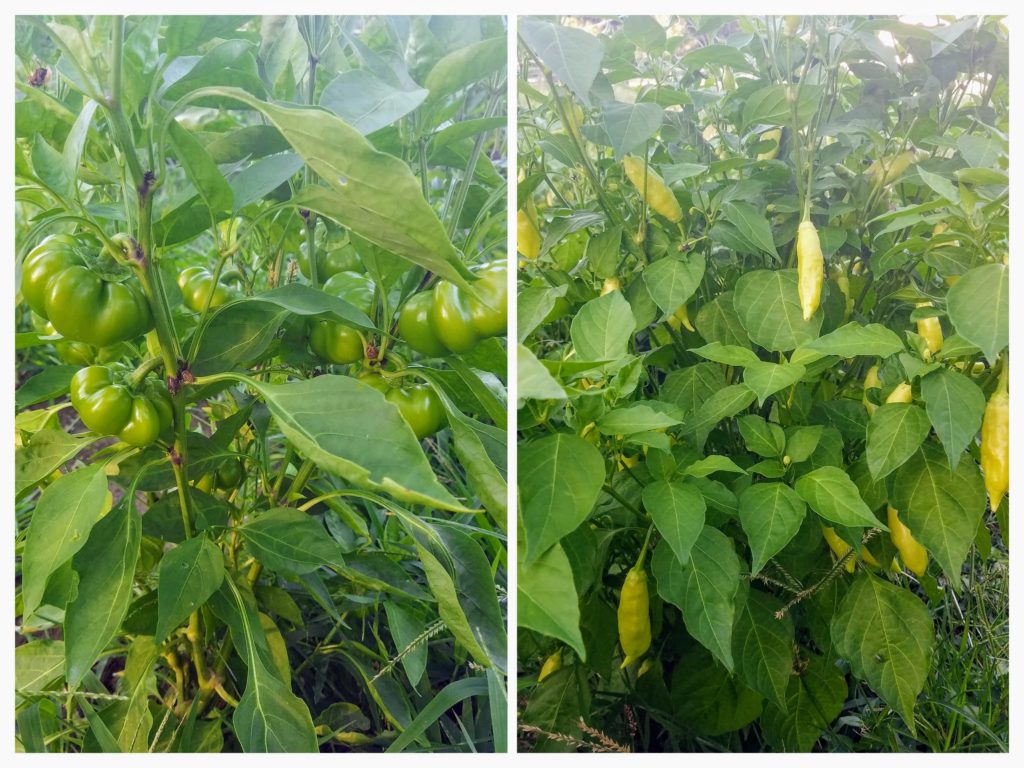
Row 9
We have a few varieties of bush beans best for fresh eating and some best for drying. In addition, we have a variety of bush lima. Yellow wax, Purple Dove, Dragon Tongue, and Black Valentine are great for eating fresh. Borlotto Di Vigevano Nano, Jacob’s Cattle, Hutterite, Hidatsa, and Rajama are better for drying. All are doing well except we had a difficult time getting the yellow wax beans to germinate. But we kept trying because we love them, and finally succeeded! Limas are slower to produce but are looking healthy. We might replant some of the varieties that are looking sad.

Row 10
In this row, we have Christmas Pole limas, which grow like crazy! There are only a few plants, but they’re doing well so far. They also have a long growing season, so we are still waiting to see what survives the dry summer garden heat to harvest before it gets too cold. In this row, we also have our cucumbers. Boston pickling, Tendergreen slicing, Parisian pickling, and Mexican gherkins. Though with the very wet spring, we had a difficult time getting anything in this row to germinate. Nonetheless, we had enough pickling cukes to make 9 pints of pickles and a few for my youngest to eat fresh. We had enough slicers to eat with plenty to share. The heat and lack of rain are also getting to these guys, but we will replant to see is we can’t make another batch or two of pickles.
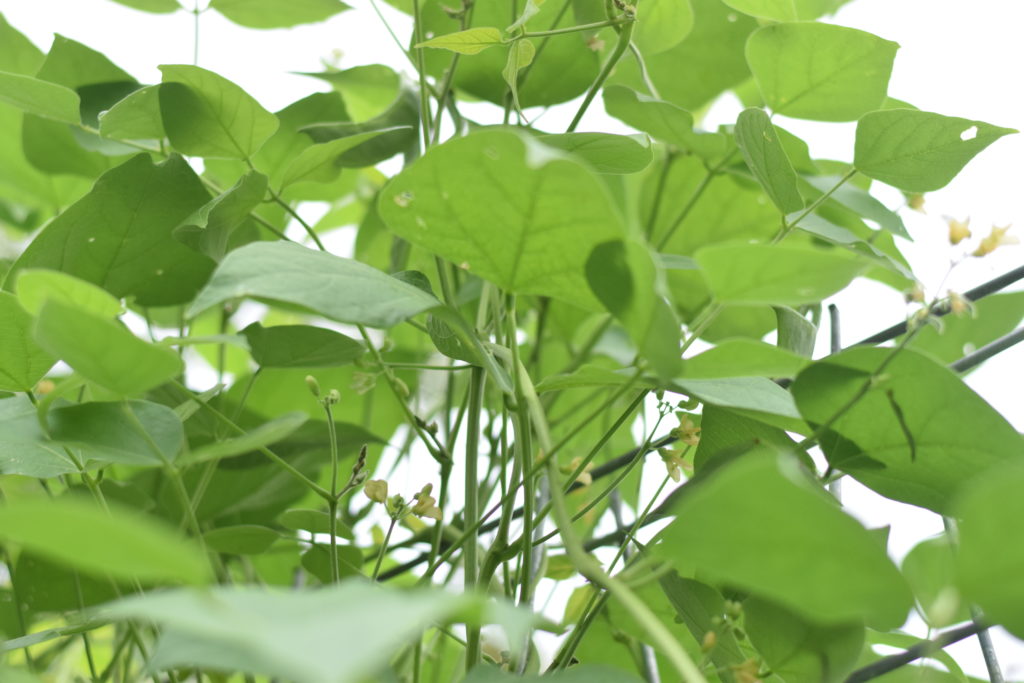
Rows 11-14
More cucurbits. Zucchini and yellow scallop summer squashes. Missouri Gold and Sweet Passion cantaloupe-type melons. Acorn, Crookneck butternut, pie pumpkin, and red kuri winter squashes. They are all looking great! In fact, they’re pretty much taking over the garden, including the paths! We’ve only had mild success with melons and winter squash in the past, so my hope is to average one fruit per plant. I’d be very pleased with that! So far, we are on track to get at least that. The crookneck squash alone has 8 fruits on just 2 plants! There are still a few weeks left before most of these will be ready to harvest, but we are encouraged by the numbers and the pretty fall yellow and orange beginning to show on the pumpkins and red kuri. These also have a long season and are not good candidates for a second planting in fall.
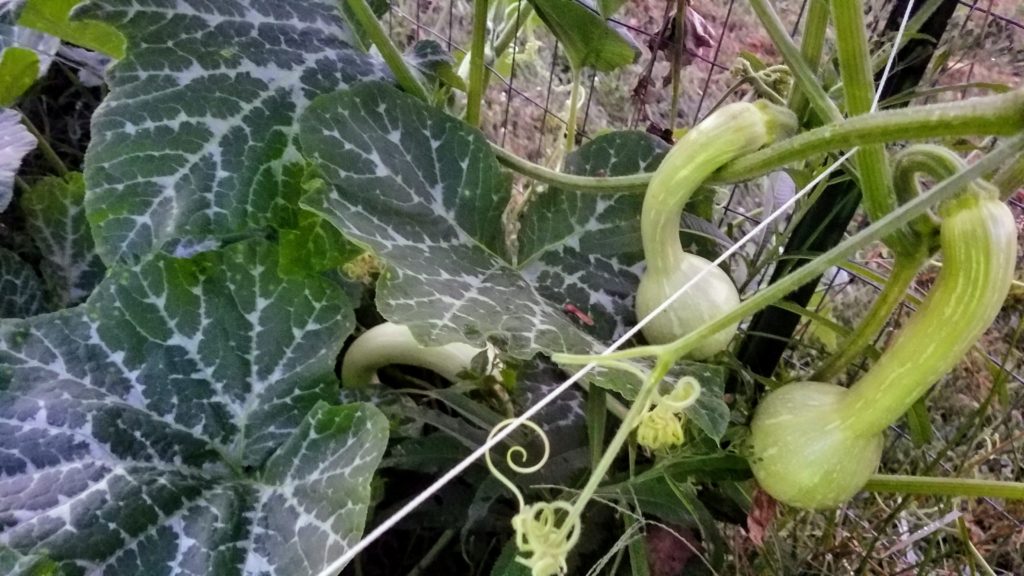
Potato beds
Our summer garden tour moves next to the main garden to our potato beds. Three sweet potato beds and 3 Irish potato beds. This is our first year growing potatoes of any kind. And I can tell you, it is difficult to wait and wonder what, if anything, is happening under the soil. We had 13 sweet potato slips survive our tender care and their foliage has filled the beds. We have flags where the slips were placed to help in harvesting. Georgia Jet, the variety we planted only put potatoes down where the plant is located, but their foliage has filled the beds, so using the flags to find the potatoes will hopefully prove helpful.
We planted one pound each of two red-skinned varieties of white potato and one variety of yellow potato. The foliage on one variety of red potato is completely dead, so they were harvested between the recording of the video and this post. Be on the lookout for that video soon in our subscriber newsletter!
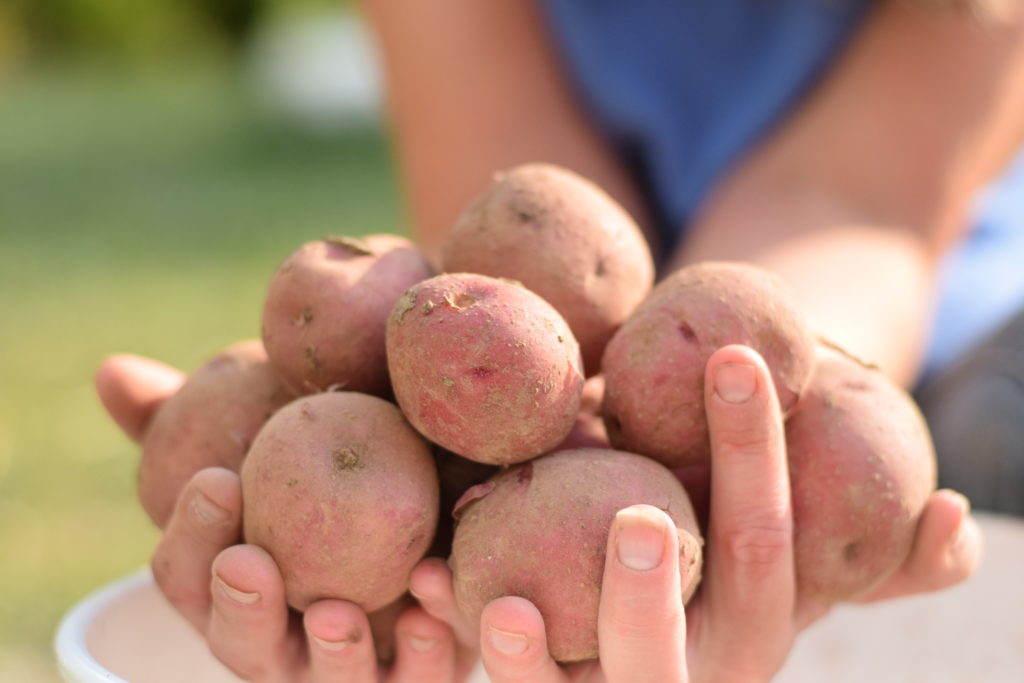
Continue the Tour of our Summer Garden with our First Garden
This little 10’x20′ patch is where we had our first garden here three years ago. Our main garden was, at that time, nothing but honeysuckle and other brush and weeds. But this little bit of lawn in the summer sun made a great spot for a summer garden. This year, we planted Blacktail Mtn. watermelon and Collective Farm melon. We also had a group of six or so mystery plants pop up. Based on the flowers and leaves, they’re either cukes or melons. How’d they get there? Hm, good question. Either I spilled some seeds or we have volunteers of a melon we grew in that area last year. It wasn’t a melon we liked much, so didn’t plan to grow it. But, if that’s what it is, I’m sure the chickens will greatly appreciate the bonus! And for now, we wait for time to solve the mystery.
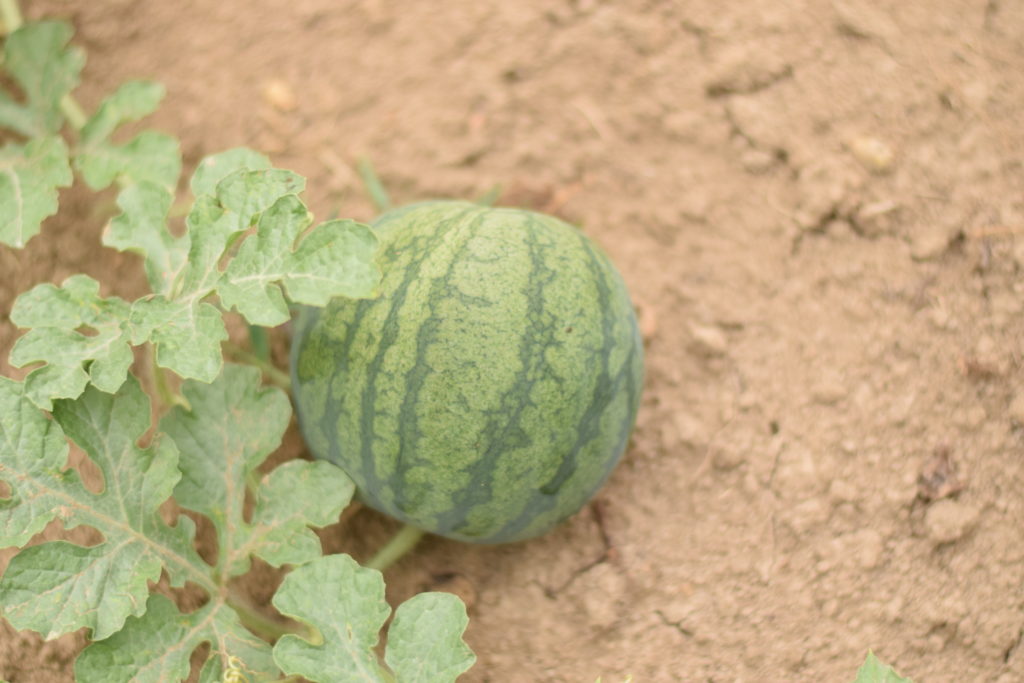
Overflow annex
This little 10’x10′ patch we dug up last year when we had more starts than would fit in the rest of the garden, to give them a place to live and grow. Then, in the fall we planted our garlic there. Now, we are using it again as the overflow annex to our main summer garden. We have a couple of watermelon plants, a pie pumpkin and a few of those mystery plants.
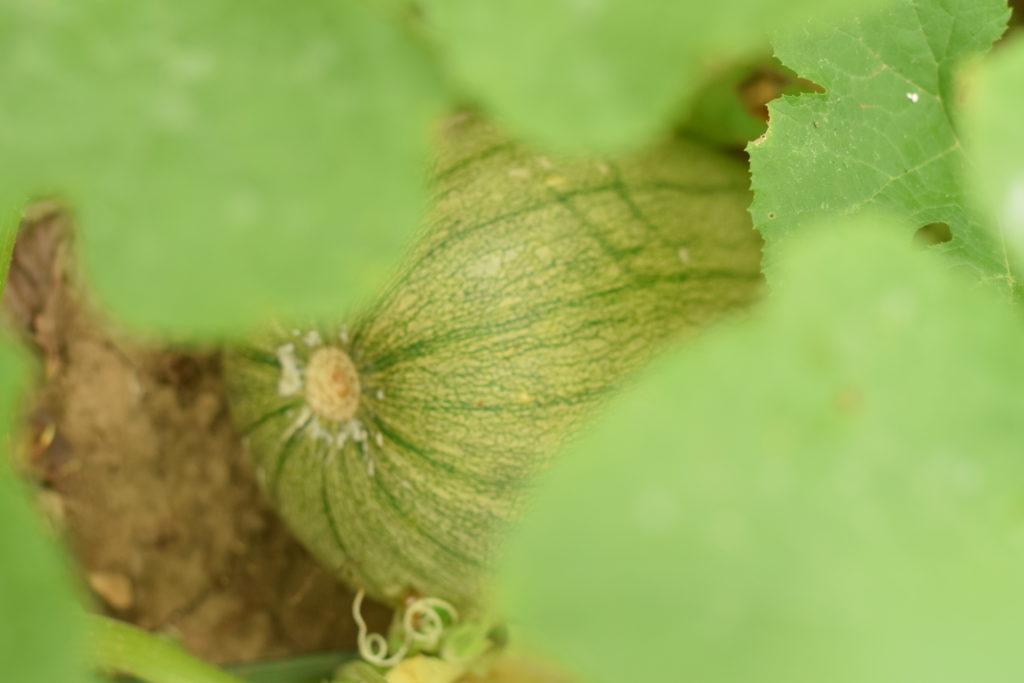
Well, that concludes the tour of our summer garden. It is peaceful to be out in the summer sun and fresh air. It is exciting to watch the plants grow and develop fruit. And so rewarding to harvest delicious and nutritious food you grew. Appreciating the beauty and miracle of God’s creation is sublime. What are you growing this year in your garden? What is doing well or what is struggling? Did you try something new this year?
See how it all started several months ago here!
Where we get nearly all of our seeds: Baker Creek
Tour Our Summer Garden

[…] any fresh produce can be fermented. This week, we fermented cucumbers, carrots, and beans from our garden. Today, we’re making an easy lacto ferment of chard […]